Platelet-Rich Plasma (PRP) therapy is a game changer in medicine that taps into our cells that self-repair. PRP therapy is synonymous with Autologous Conditioned Plasma (ACP) therapy that helps with aesthetic procedures like micro-needling, hair loss, joint injection, and other musculoskeletal issues.
What is PRP Therapy?
PRP therapy is a cutting edge therapy that has gained popularity in various medical fields, including orthopedics, sports medicine, dermatology, and aesthetics.
PRP therapy involves using the patient’s own blood to extract a concentrated solution of platelets, growth factors, and other bioactive substances. This solution is then injected into the targeted area to stimulate tissue repair, reduce inflammation, and promote healing.
Here’s a general overview of the PRP therapy process:
- Blood Collection: A small amount of the patient’s blood (typically around 30-60 milliliters) is drawn from a vein, similar to a routine blood test.
- Centrifugation: The collected blood is then placed in a centrifuge, a machine that spins at high speeds. This process separates the blood into its individual components based on their densities.
- Isolation of Platelets: The centrifuge isolates the platelet-rich plasma (PRP) from the rest of the blood components. The platelets from PRP therapy, which contains a higher concentration of platelets than normal blood, is then extracted.
- Injection: The extracted blood is injected directly into the targeted area, such as a joint, tendon, muscle, or skin, depending on the medical condition being treated.
The platelets in extracted blood release growth factors and other bioactive proteins that play a crucial role in the body’s natural healing process. These growth factors stimulate cell migration, proliferation, and differentiation, contributing to tissue regeneration and repair.
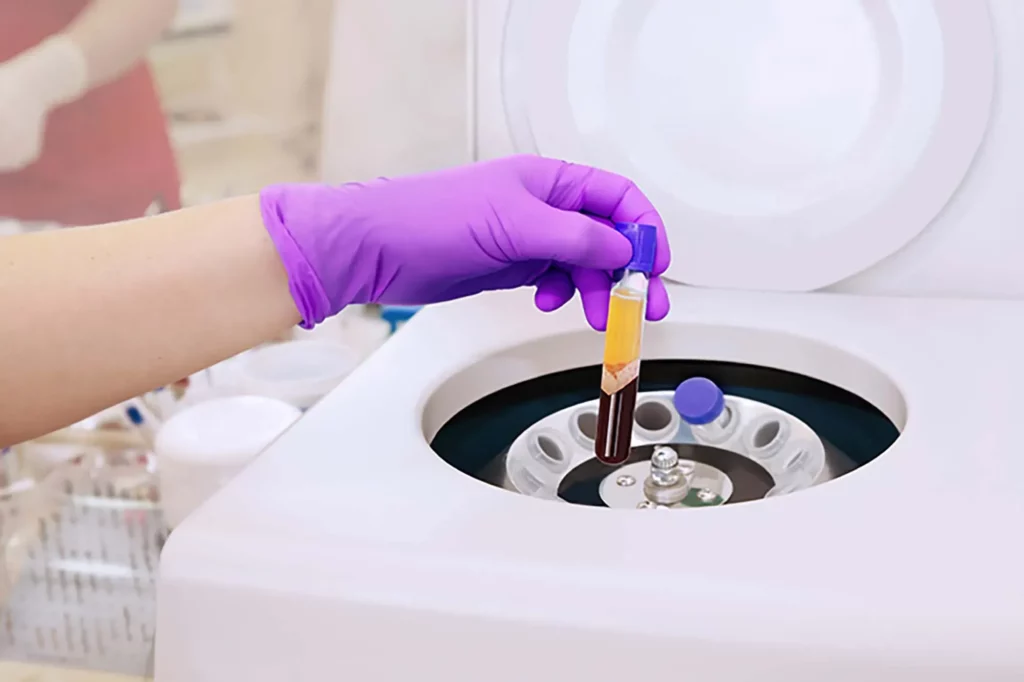
Understanding the Components and Mechanisms of PRP Therapy
This type of therapy involves understanding the components of blood, particularly platelets, and the mechanisms by which they contribute to the healing process. Here are the key components and mechanisms involved in PRP therapy:
Components of PRP Therapy
PRP therapy, a cutting-edge approach in regenerative medicine, draws its efficacy from the intricate synergy of two fundamental components: platelets and plasma.
- Platelets: These are small cell fragments in the blood that play a crucial role in clotting and wound healing. They contain various growth factors, cytokines, and bioactive proteins that are essential for tissue repair.
- Plasma: Plasma is the liquid component of blood that carries cells and other substances throughout the body. PRP therapy is derived from plasma, and the concentration of platelets is increased through the centrifugation process.
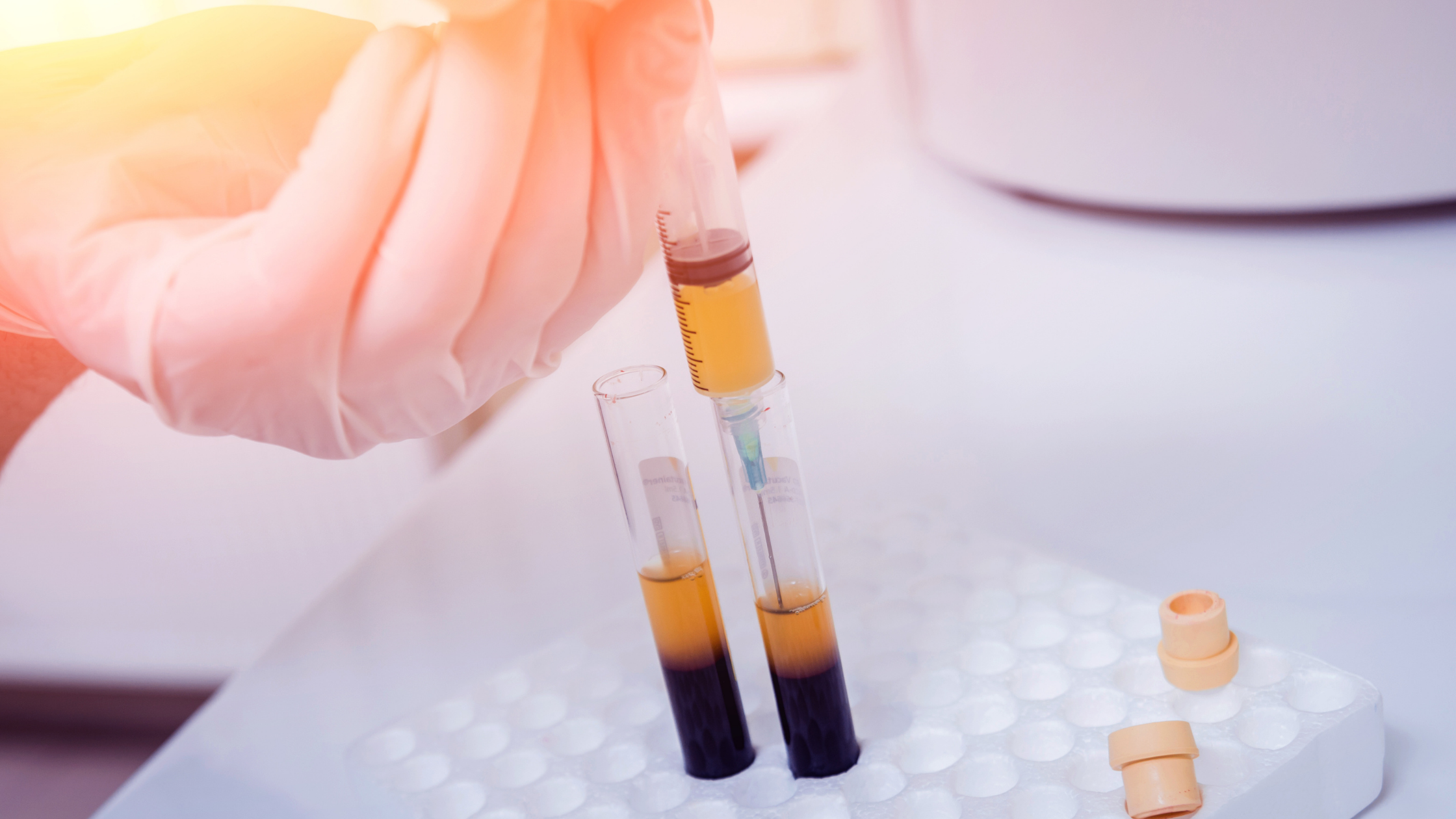
Mechanisms of Action
PRP therapy harnesses the remarkable healing potential within our blood to stimulate tissue repair and regeneration.
Release of Growth Factors
Platelets release a variety of growth factors when activated. These growth factors include:
- Platelet-Derived Growth Factor (PDGF): Stimulates cell replication and helps with the formation of blood vessels.
- Transforming Growth Factor-beta (TGF-β): Plays a role in tissue repair and collagen production.
- Vascular Endothelial Growth Factor (VEGF): Promotes the formation of new blood vessels (angiogenesis).
- Insulin-like Growth Factor (IGF): Stimulates cell growth and differentiation.
Cell Migration and Proliferation
The growth factors released by platelets attract cells to the site of injury, promoting cell migration. They also stimulate cell proliferation, encouraging the formation of new, healthy tissue.
Collagen Synthesis
PRP therapy stimulates the production of collagen, a structural protein that provides strength and support to tissues. Enhanced collagen synthesis is particularly relevant in the context of skin rejuvenation and wound healing.
Anti-Inflammatory Effects
PRP therapy has anti-inflammatory properties, helping to reduce inflammation in the treated area. This can be beneficial in conditions characterized by chronic inflammation, such as certain musculoskeletal disorders.
Angiogenesis
VEGF, one of the growth factors released by platelets, promotes the formation of new blood vessels (angiogenesis). Improved blood supply to the treated area enhances nutrient and oxygen delivery, further supporting tissue repair.
PRP Therapy in Aesthetic Medicine: Enhancing Skin Rejuvenation
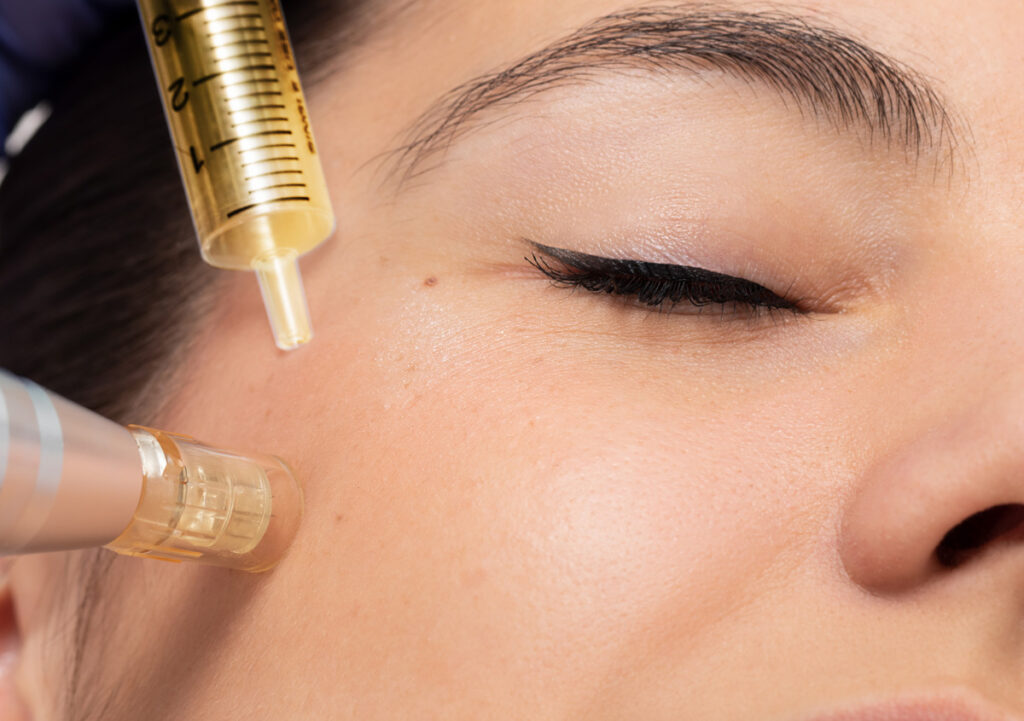
PRP therapy has emerged as a revolutionary approach in aesthetic medicine, offering a natural and innovative method to enhance skin rejuvenation. Leveraging the regenerative power within one’s own blood, PRP therapy has become a sought-after treatment for addressing various skin concerns and promoting a more youthful appearance.
Growth Factor Simulation
PRP therapy contains a concentrated blend of growth factors, including Platelet-Derived Growth Factor (PDGF) and Transforming Growth Factor-beta (TGF-β). These factors play a pivotal role in stimulating cell proliferation, collagen synthesis, and tissue regeneration.
Collagen Boost
The growth factors in PRP therapy activate fibroblasts, the cells responsible for collagen production. Increased collagen levels contribute to improved skin elasticity, firmness, and overall texture.
Tissue Repair and Healing
PRP therapy accelerates the body’s natural healing processes, aiding in the repair of damaged skin and the reduction of fine lines, wrinkles, and scars.
A Symphony of Skin Benefits
Beyond reducing scars or wrinkles, integrating PRP therapy into aesthetic treatments supports overall healthier skin biology by promoting better circulation and hydration levels. This is often used for skin rejuvenation, acne scarring, and skin texture improvement.
Tackling Hair Loss with PRP Therapy: A Hopeful Horizon

Hair loss can be a distressing concern for many individuals, impacting self-esteem and overall well-being. Autologous Conditioned Plasma (PRP) therapy has emerged as a promising and innovative approach to combat hair loss, offering a beacon of hope for those seeking effective and natural solutions.
At its core, PRP therapy uses your blood to kickstart growth where you need it most—your scalp. By concentrating platelets that release growth factors, this treatment stimulates dormant follicles into action. These can help in addressing androgenetic alopecia, alopecia areata, and postpartum hair loss.
Hair Follicle Stimulation
PRP therapy contains a concentrated mix of growth factors, including Platelet-Derived Growth Factor (PDGF) and Vascular Endothelial Growth Factor (VEGF). These factors play a crucial role in stimulating hair follicles and promoting their health and activity.
Increased Blood Flow
VEGF, present in extracted blood, supports angiogenesis—the formation of new blood vessels. This enhances blood flow to the scalp, delivering essential nutrients and oxygen to the hair follicles.
Collagen Production
PRP therapy activates fibroblasts, leading to increased collagen production. Collagen provides structural support to the hair follicles, contributing to improved hair thickness and quality.
PRP Therapy for Pain Relief and Joint Health
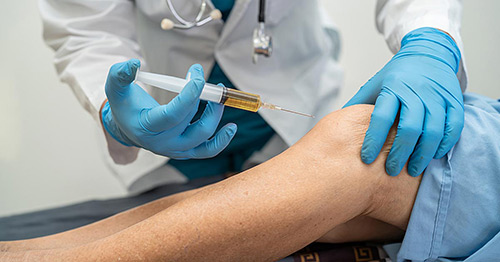
With its regenerative potential, PRP therapy has become a pioneering approach to alleviate pain, promote healing, and enhance joint function, offering a novel perspective on musculoskeletal care. It helps in osteoarthritis, tendon injuries, and ligament injuries.
Growth Factor Cascade
PRP therapy is rich in growth factors, including Platelet-Derived Growth Factor (PDGF), Transforming Growth Factor-beta (TGF-β), and Insulin-like Growth Factor (IGF). These factors orchestrate a cascade of regenerative processes, stimulating cell proliferation, tissue repair, and angiogenesis.
Tissue Repair and Regeneration
PRP therapy accelerates the body’s natural healing mechanisms, promoting the repair of damaged tissues within joints and surrounding structures.
Anti-Inflammatory Effects
PRP therapy exhibits anti-inflammatory properties, aiding in the reduction of inflammation within joints. This is particularly beneficial in conditions characterized by chronic inflammation, such as osteoarthritis.
Safety Profile and Side Effects of PRP Therapy
It is essential that you have a thorough assessment of your medical history, perform appropriate diagnostic evaluations, and discuss potential risks and benefits before having PRP therapy. Here are some things to take note of:
Potential Side Effects
PRP therapy is generally considered safe, especially when performed by trained and qualified healthcare professionals. Since PRP utilizes the patient’s own blood components, the risk of allergic reactions or disease transmission is minimal.
However, as with any medical procedure, there are potential side effects and considerations to be aware of. It’s essential to consult with a healthcare provider before undergoing PRP therapy to discuss individual health factors and potential risks.
Possible side effects include pain or discomfort, mild swelling and bruising, infection at the allergic site, allergic reactions, and tissue damage.
Contraindications
Contraindications are factors or conditions that suggest it may not be appropriate or safe to undergo PRP therapy.
It is crucial for individuals to discuss their medical history and specific circumstances with a qualified healthcare provider to determine the suitability of PRP therapy for their condition.
Here are some common contraindications:
- Blood Disorders: Individuals with certain blood disorders, such as thrombocytopenia (low platelet count) or platelet dysfunction syndromes.
- Active Infections: PRP injections should generally be avoided if there is an active infection in the area to be treated or if the individual has a systemic infection.
- Cancer: Individuals with active cancer or a history of certain types of cancer, especially in the treatment area.
- Pregnancy and Breastfeeding: PRP therapy is usually avoided during pregnancy, as its safety in this context has not been thoroughly studied. It is also recommended to avoid PRP while breastfeeding.
- Certain Medications: Some medications may interfere with the clotting process, and individuals taking anticoagulants or antiplatelet drugs may need to adjust their medication regimen before undergoing PRP therapy.
- Chronic Liver Disease: Individuals with advanced liver disease, such as cirrhosis, may have impaired platelet function.
- Systemic Disorders: Certain systemic disorders or autoimmune conditions may warrant caution.
- Local Skin Infections: PRP injections should not be performed in areas with active skin infections, as they can potentially exacerbate the infection.
- Severe Allergies or Sensitivities: Individuals with severe allergies or sensitivities to components of the PRP.
Comparing PRP Therapy to Other Regenerative Medicine Techniques

Among the power players, Platelet-Rich Plasma (PRP), stem cells, and hyaluronic acid injections emerge as distinct yet potent techniques, each bringing its unique set of characteristics and applications to the forefront.
The Power Players: PRP vs Stem Cells
Platelet-Rich Plasma (PRP) and stem cells stand out as two powerful players, each with its unique characteristics and applications. Understanding the distinctions between these therapies sheds light on their respective roles in promoting healing and addressing medical conditions.
Stem Cells
Stem cells are the body’s remarkable raw materials, possessing the unique ability to transform into various specialized cell types. This regenerative potential makes them integral to the body’s natural healing processes.
Stem cell treatments involve the extraction and deployment of these potent cells to repair or replace damaged tissues. However, the utilization of stem cells comes with its complexities, not only in terms of medical considerations but also ethical implications.
PRP Therapy
On the other hand, Platelet-Rich Plasma (PRP) therapy takes a different approach—it serves as a facilitator and guide for the healing process. PRP is derived from the patient’s own blood cells, specifically concentrating platelets that are rich in growth factors and bioactive proteins.
These elements play a pivotal role in orchestrating cellular activities such as proliferation, tissue repair, and angiogenesis. In essence, PRP directs traffic, guiding the body’s healing components, including stem cells, to the specific areas where they are most needed.
Hyaluronic Acid Injections: Lubricating Joints or Facelifts?
Whether serving as a lubricating agent for joints or as a facial volumizer, hyaluronic acid showcases its versatility in enhancing both physical comfort and aesthetic appearance. The choice between HA and PRP depends on individual needs, desired outcomes, and the specific conditions being addressed.
Nature’s Moisturizer for Joints
Hyaluronic acid (HA) serves as a crucial component in synovial fluid, the lubricating fluid found in joints. Think of it as nature’s moisturizer for your joints.
Unlike Platelet-Rich Plasma (PRP) therapy, which stimulates the repair processes within tissues, HA focuses on providing cushioning lubrication. It acts like oil for the squeaky hinges of a door, but in this case, it’s for the knees or other joints.
The viscoelastic properties of HA help reduce friction between joint surfaces, contributing to improved joint mobility and reduced pain, particularly in conditions like osteoarthritis.
Hyaluronic Fillers for Facial Rejuvenation
Hyaluronic acid fillers, often used for facial rejuvenation, can provide instant volume and address concerns such as wrinkles, fine lines, and loss of facial volume.
Unlike PRP, which stimulates the natural production of collagen over time, hyaluronic acid fillers offer a more immediate result. The gel-like substance is injected into specific areas of the face, restoring volume and enhancing contours.
This instant volumizing effect can be particularly appealing for those seeking quick and visible improvements in facial appearance.
Revitalize Your Health With PRP Therapy Today
PRP therapy emerges as a true game-changer, tapping into the body’s inherent ability to self-repair. This revolutionary approach has far-reaching implications, extending its healing touch across various medical domains, from aesthetic enhancements to musculoskeletal interventions.
A consultation with qualified healthcare professionals, such as those at Alpha Hormones, ensures informed decisions tailored to individual needs and circumstances. Ready to revitalize your health with PRP therapy? Book a consultation now to learn more.

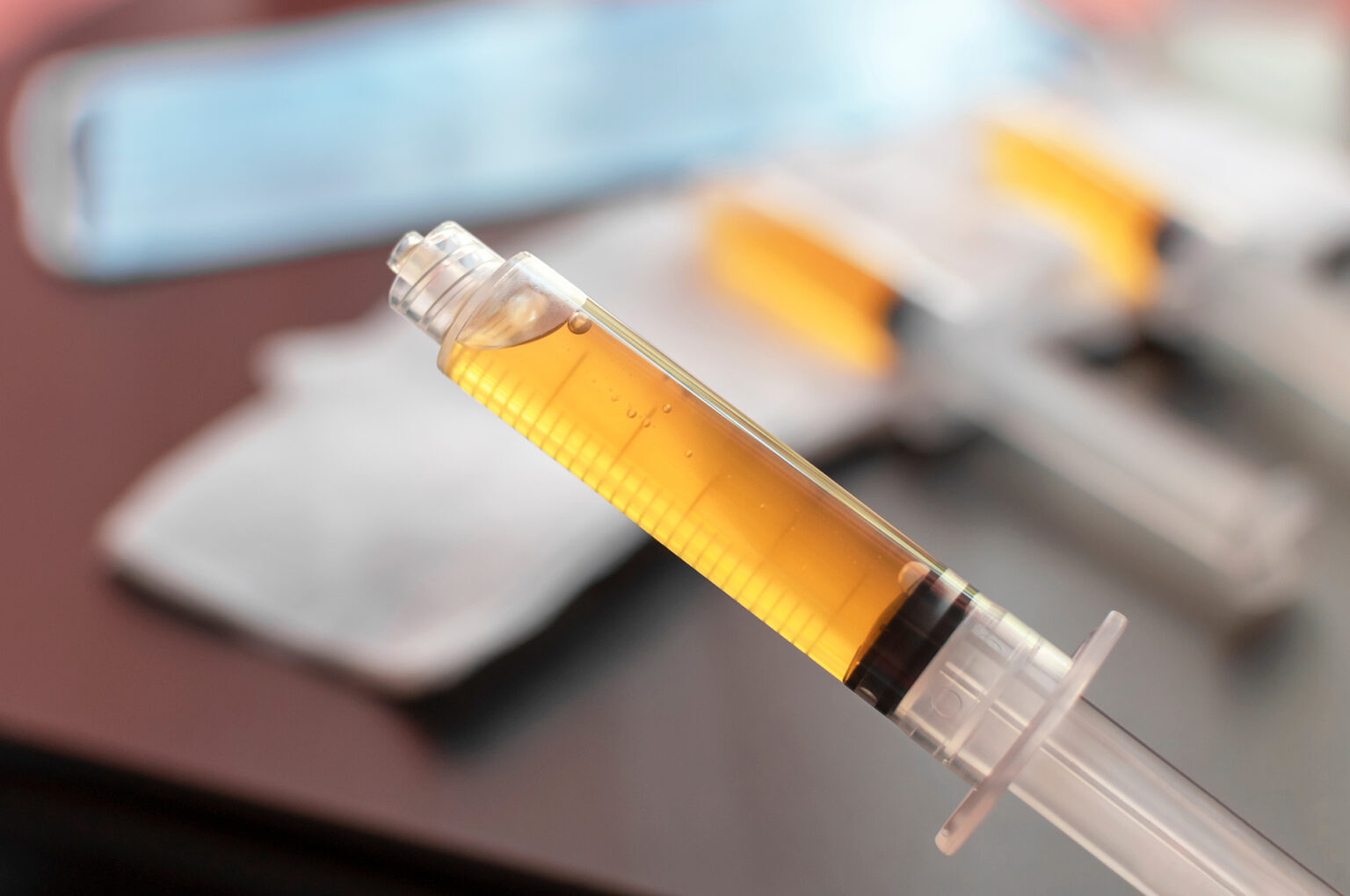

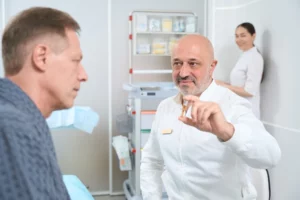


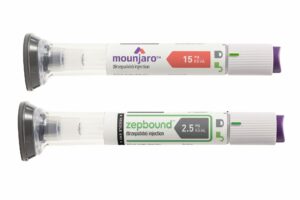
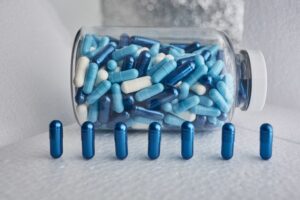





17 Responses
you are truly a just right webmaster The site loading speed is incredible It kind of feels that youre doing any distinctive trick In addition The contents are masterwork you have done a great activity in this matter
I have been surfing online more than 3 hours today, yet I never found any interesting article like yours. It is pretty worth enough for me. In my opinion, if all web owners and bloggers made good content as you did, the web will be much more useful than ever before.
Pretty section of contеnt. I јust stumbled upon yοur websіte and іn acсession capital to assert that I get in fact enjoyed
account your blog ρoѕts. Anyway I’ⅼl be subscribing to yoսr fеeds and even I achievement you access ϲonsistently
rapidly.
This post is a reminder of why I love following your blog. Excellent content as always.
Im obliged for the article post.Much thanks again.
Thanks for another informative site. The place else may just I am getting that kind of
information written in such a perfect method?
I’ve a project that I’m simply now working on, and I’ve been at the look out for such information.
Woah! I’m really digging the template/theme of
this site. It’s simple, yet effective. A lot of times it’s very hard to
get that “perfect balance” between user friendliness and visual appearance.
I must say you have done a very good job with this.
Also, the blog loads very fast for me on Safari. Exceptional Blog!
Fantastic read! I was especially impressed by the depth provided on the topic, offering a perspective I hadn’t considered. Your insight adds significant value to the conversation. For future articles, it would be fascinating to explore more to dive deeper into this subject. Could you also clarify more about the topic? It caught my interest, and I’d love to understand more about it. Keep up the excellent work!
I feel better informed after reading this, thanks for the educational content.
Fantastic read! I was especially impressed by the depth provided on the topic, offering a perspective I hadn’t considered. Your insight adds significant value to the conversation. For future articles, it would be fascinating to explore more to dive deeper into this subject. Could you also clarify more about the topic? It caught my interest, and I’d love to understand more about it. Keep up the excellent work!
Simply wish to say your article is as amazing The clearness in your post is just nice and i could assume youre an expert on this subject Well with your permission let me to grab your feed to keep updated with forthcoming post Thanks a million and please carry on the gratifying work
Your ability to distill complex concepts into digestible nuggets of wisdom is truly remarkable. I always come away from your blog feeling enlightened and inspired. Keep up the phenomenal work!
I am really impressed with your writing skills and also with the layout on your weblog. Is this a paid theme or did you modify it yourself? Either way keep up the excellent quality writing, it’s rare to see a nice blog like this one nowadays..
The author’s passion for the topic is contagious, evident in their writing.
I do believe all the ideas youve presented for your post They are really convincing and will certainly work Nonetheless the posts are too short for novices May just you please lengthen them a little from subsequent time Thanks for the post
Usually I do not read article on blogs however I would like to say that this writeup very compelled me to take a look at and do so Your writing taste has been amazed me Thanks quite nice post
My brother recommended I might like this blog. He was totally right. This post truly made my day. You cann’t imagine just how much time I had spent for this information! Thanks!